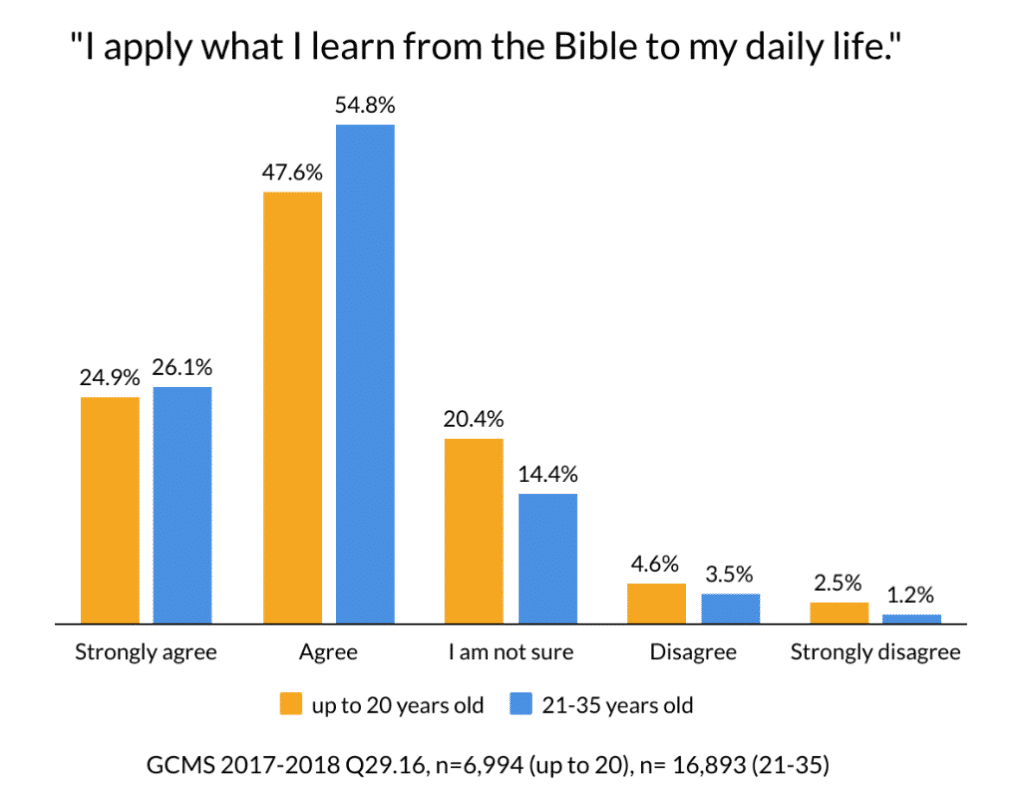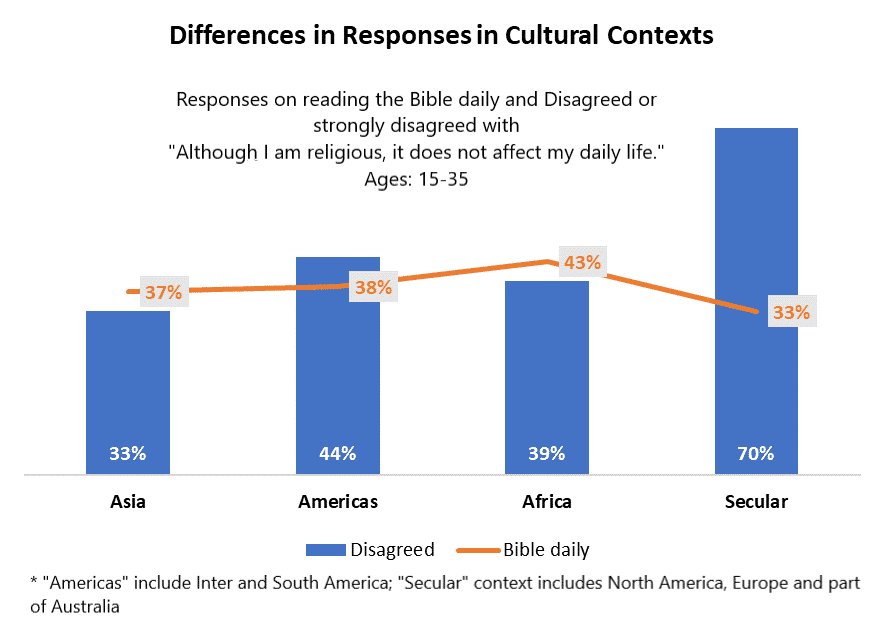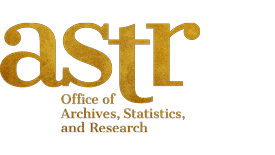You show that you are a letter from Christ, the result of our ministry, written not with ink but with the Spirit of the living God, not on tablets of stone but on tablets of human hearts.
2 Cor 3:3, NIV
These inspiring words written by the apostle Paul to the church in Corinth are a motto of every disciple of Christ. But what does it take to become His letter “known and read” (2 Cor. 3:2, NIV) by all people? Spiritual habits, such as regular Bible reading, personal prayers, devotions, witnessing, etc., are essential in becoming more like Jesus. However, it is the application of spiritual principles we learn that matters. How do Adventist young people do in this area?
The 2017-18 Global Church Member Survey (GCMS) conducted in all thirteen divisions of the Seventh-day Adventist Church had some questions on the application of spiritual lessons. When Adventist adolescents and young adults answered these questions, a substantial majority (72% and 81% respectively) demonstrated the vital practice of personal application of what they learned from the Bible to their lives. Less, but still many (65% and 76% respectively) said they applied lessons learned from the Sabbath School Quarterlies. Half of the adolescents and 64% of young adults also reported that they did it with the writings of Ellen White. The decrease in numbers can be explained by fewer people reading regularly Sabbath School lessons or Ellen White’s writings. As an example from this research, if 46% of adolescents and 57% of young adults said they studied the Sabbath School lessons daily or more than once a week, only 23% and 32% respectively read Ellen White’s writings with the same frequency.



In the same study, the church members were also asked if being religious affected their daily life. Despite big numbers on spiritual lessons’ application to personal life, only 37% of adolescents and 42% of young adults disagreed with the statement: “Although I am religious, it does not affect my daily life.” A majority of respondents either agreed or were not sure.

A team of researchers from Andrews University, who produced the 2017-18 GCMS Meta-Analysis report, analyzed by geographical location responses to some questions, with this particular question included. Interestingly, the analysis debunked a common myth regarding perceived spirituality in specific contexts (see a graph below). Contrary to some expectations, a majority of young Adventists of 15-35 years of age in a secular context disagreed with the statement: “Although I am religious, it does not affect my daily life.” While in Asia, only one-third of young Adventists did so, and fewer than half disagreed with it in Africa, Inter and South America. Comparison with the results on the daily Bible reading by geographical territory shows that intrinsic religiosity is not automatically acquired by merely reading the Bible. The results for daily Bible reading were not high for young Adventists on any continent. However, surprisingly, in a secular context, although not a significant number (33%) read the Bible daily, 70% of young people said their beliefs affected their daily lives. There are unexpected gaps between responses to these two questions in each geographical area. One possible explanation is that this may reveal a trend in a secular context for an individualistic approach to religion, where it is more a private matter than a tradition for the whole community. By contrast, in many community-oriented cultures, faith is an integral part of the community as a whole. People express their religiosity more through the outward activities of religious community than through personal religious commitments. These findings also point out the need for a focused discipleship strategy for young people in every local church around the globe.

Further study is needed to investigate the results in each context and reasons for the gap between the high percentage of responses on personal application of spiritual lessons and the low rate of the effect of someone’s religion on his or her daily life. The questions still remain: What does it take to become a letter of Christ? How religious beliefs and spiritual lessons can become an integral part of young people’s personal lives? This reality challenges parents, teachers, youth leaders, and pastors. What answers will they find? Surely, they have to show young people an example of genuine religiosity. And they need to teach them how to grow daily in this life-time journey of discipleship to become Christ’s letter where the beliefs are internalized and written on the tablets of the heart.
Watch out for our announcement on the soon coming books with data from the 2017-18 Global Church Member Survey on Adventist adolescents, young adults, and church members’ beliefs and practices. See above picture a cover page of the first volume.
Creado en colaboración con el Instituto del Ministerio de la Iglesia (Institute of Church Ministry).
Published by ASTR

